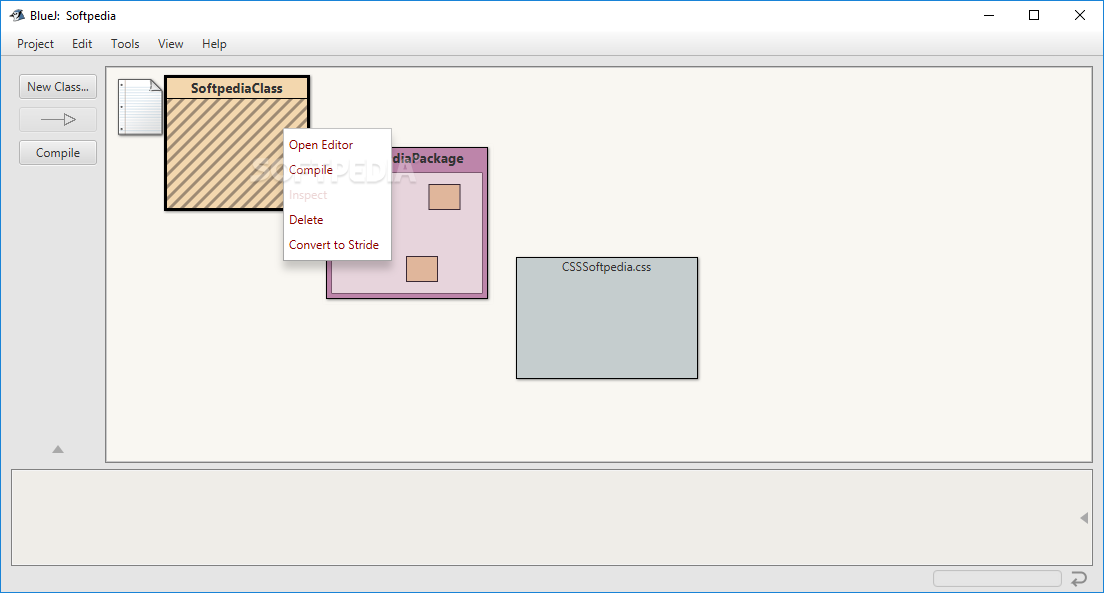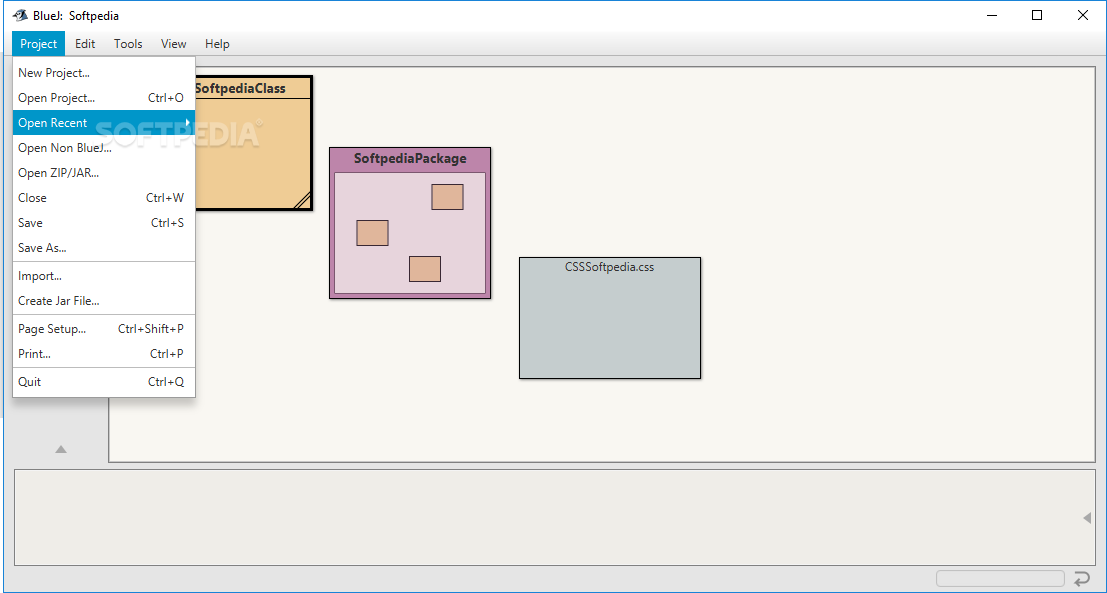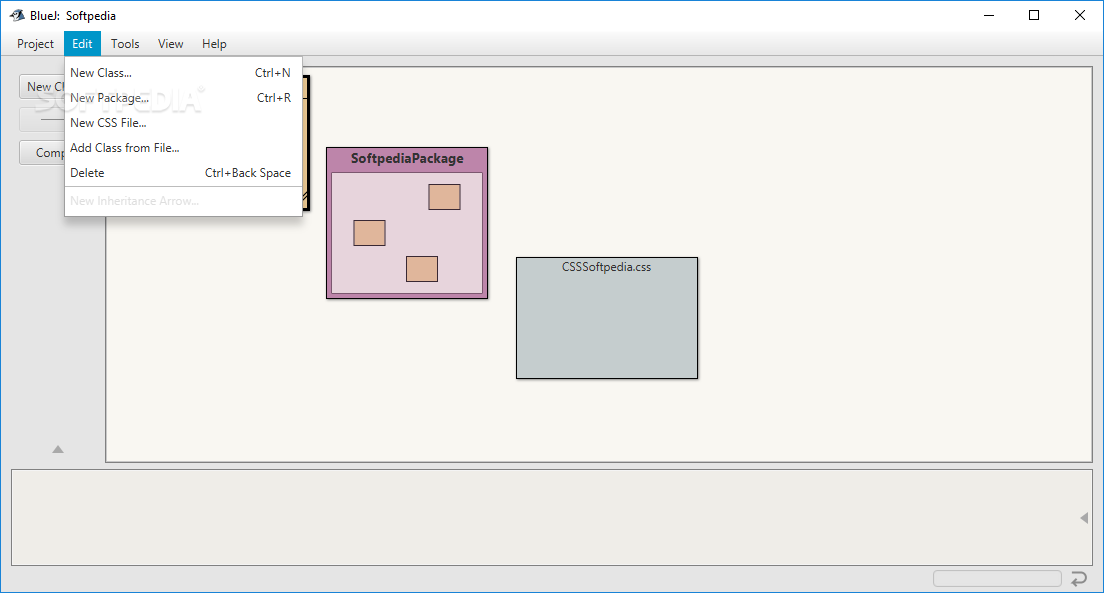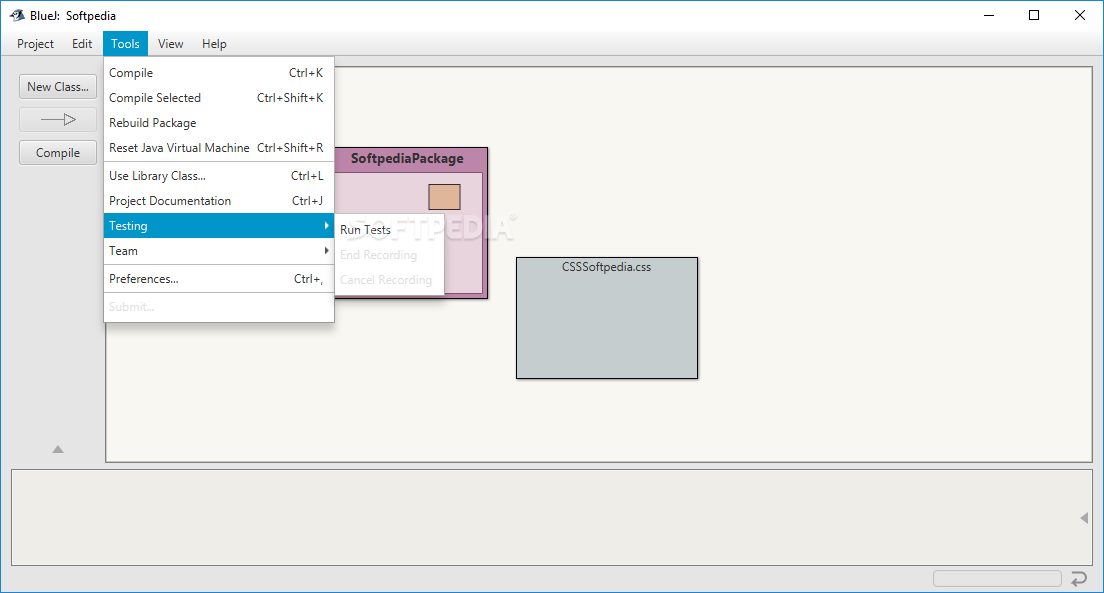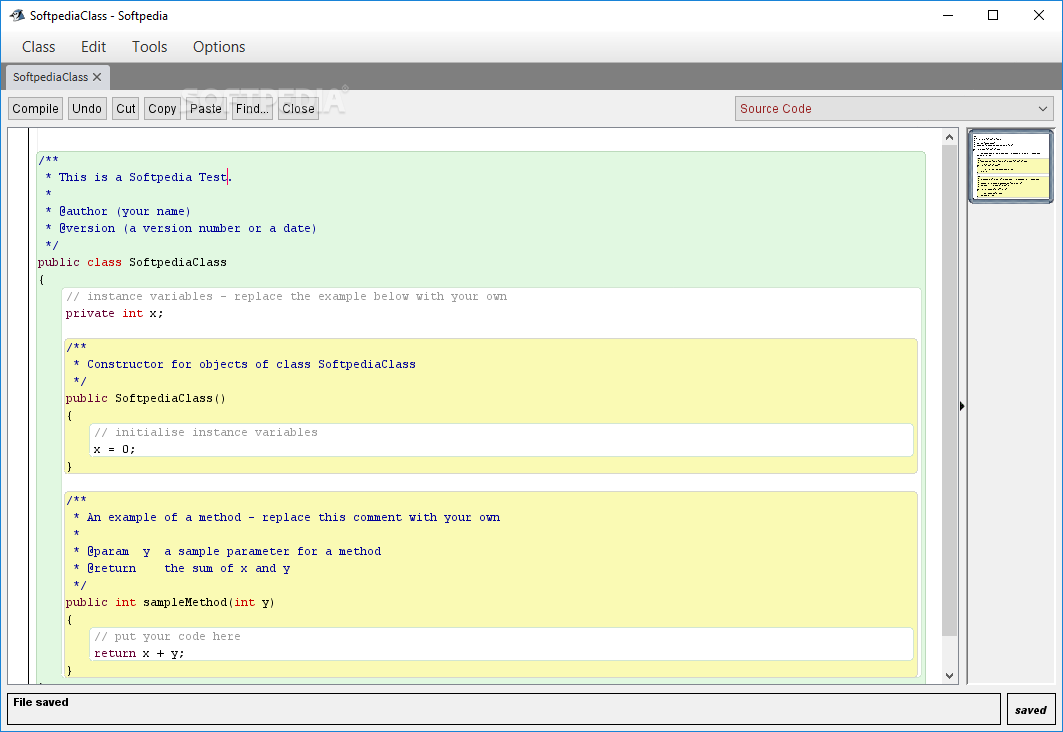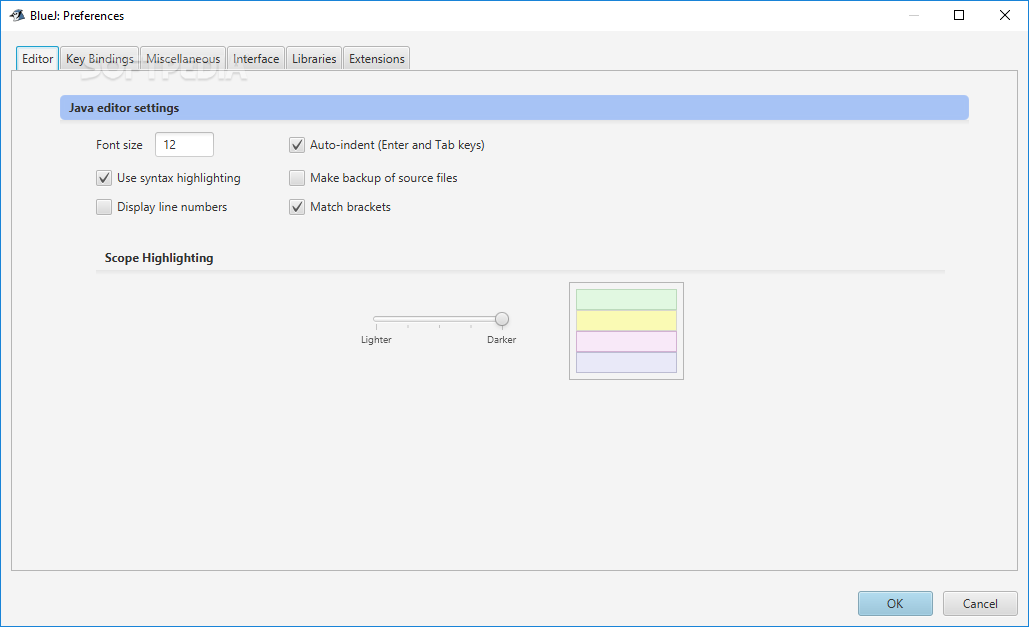
BlueJ
5.0.2Teaching environment for Java students, equipped with graphical class structures, an editor, compiler, virtual machine, and debugger
BlueJ is an open-source tool that allows users to teach people about the Java programming environment. It comes equipped with graphical class structures, an editor, compiler, virtual machine, and debugger.
The interface is user-friendly, consisting of a standard window with a simple structure. Creating a new project requires you to specify the saving directory and file name. You can create a new class and establish its name and type (e.g. class, abstract class, interface, applet), insert a "uses" relation between two classes as well as "inheritance".
In addition, you can build new packages, rebuild them, add classes from file, use a library class, as well as import directories. Double-clicking a class in the list gives you access to the source code and documentation.
BlueJ provides comments in every section of the source code, along with examples of methods. After editing it, you can compile the code and save it. The project can be exported to JAR.
Other options of BlueJ let you reconfigure keyboard shortcuts, change the UI language, customize editor properties (e.g. font size, syntax highlighting), reset the virtual machine, view the debugger, and more.
The application is light on the system resources and works well, without hanging, crashing or showing error messages. We have not come across any issues in our tests. All in all, BlueJ contains the necessary and suffice elements for a standard Java teaching tool. There is also a portable edition available, if you want to run it from pen drives on any machine easily.
Learn the ropes about Java programming with the help of this comprehensive yet quite user-friendly utility
The interface is user-friendly, consisting of a standard window with a simple structure. Creating a new project requires you to specify the saving directory and file name. You can create a new class and establish its name and type (e.g. class, abstract class, interface, applet), insert a "uses" relation between two classes as well as "inheritance".
In addition, you can build new packages, rebuild them, add classes from file, use a library class, as well as import directories. Double-clicking a class in the list gives you access to the source code and documentation.
Packs more customization options than you might be tempted to believe
BlueJ provides comments in every section of the source code, along with examples of methods. After editing it, you can compile the code and save it. The project can be exported to JAR.
Other options of BlueJ let you reconfigure keyboard shortcuts, change the UI language, customize editor properties (e.g. font size, syntax highlighting), reset the virtual machine, view the debugger, and more.
Very handy and capable learning tool suitable users who are looking to learn the basics of Java programming
The application is light on the system resources and works well, without hanging, crashing or showing error messages. We have not come across any issues in our tests. All in all, BlueJ contains the necessary and suffice elements for a standard Java teaching tool. There is also a portable edition available, if you want to run it from pen drives on any machine easily.
238 MB
Info
Update Date
Aug 05 2021
Version
5.0.2
License
GPLv2
Created By
University of Kent
Related software Development
